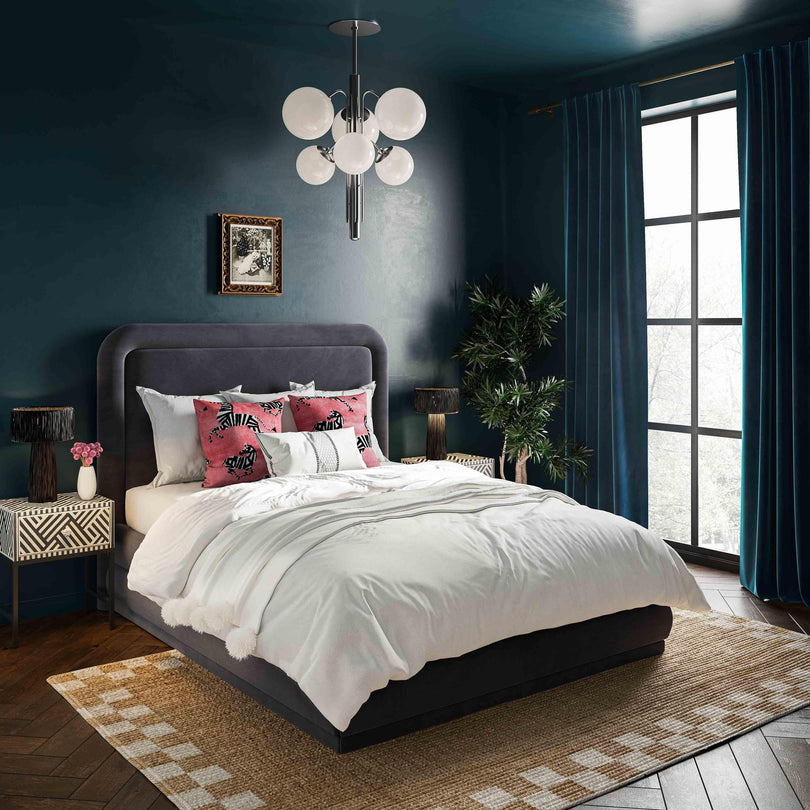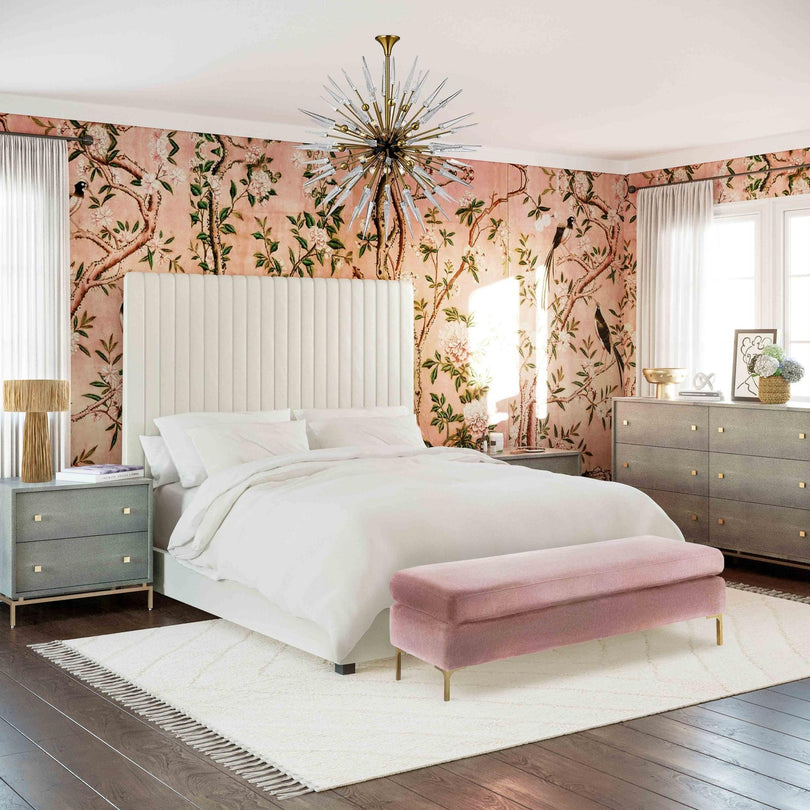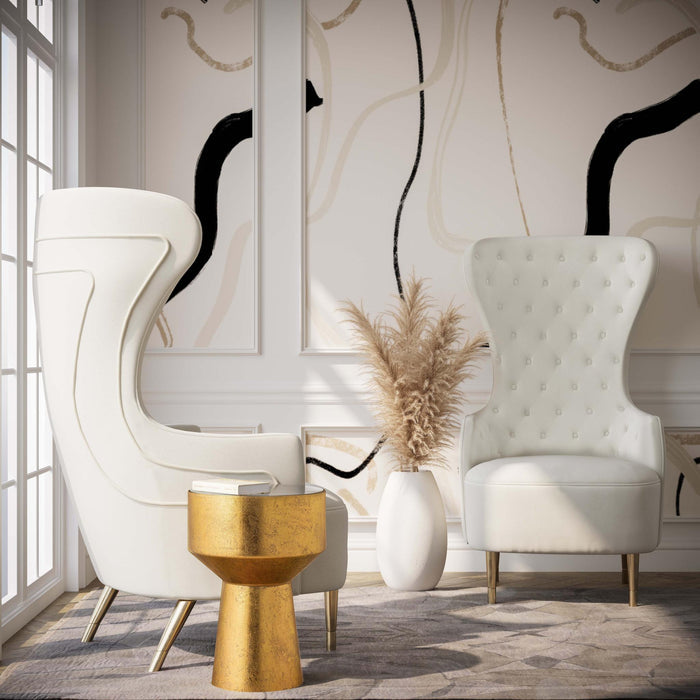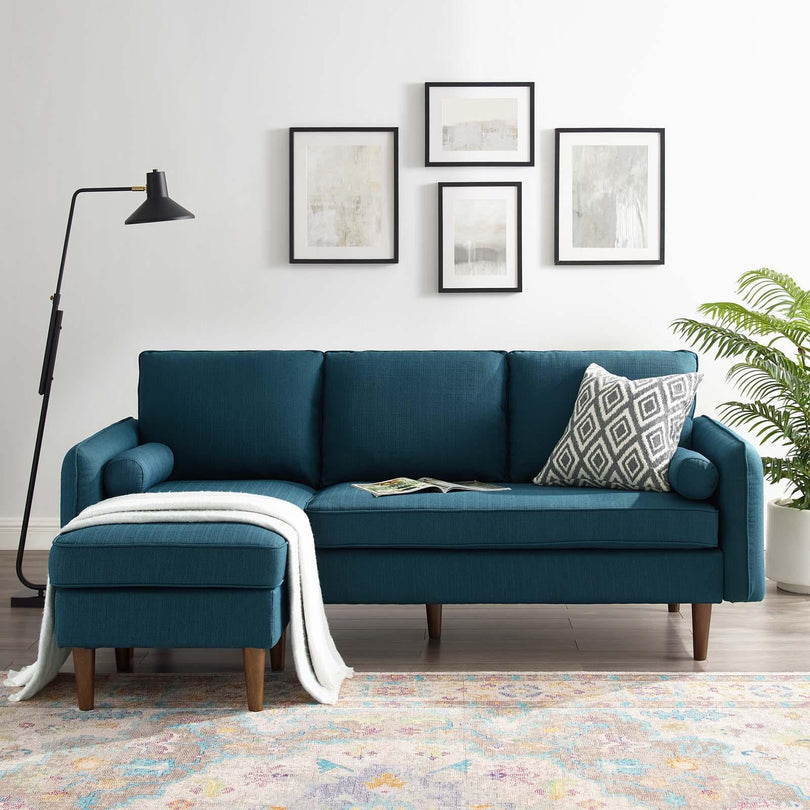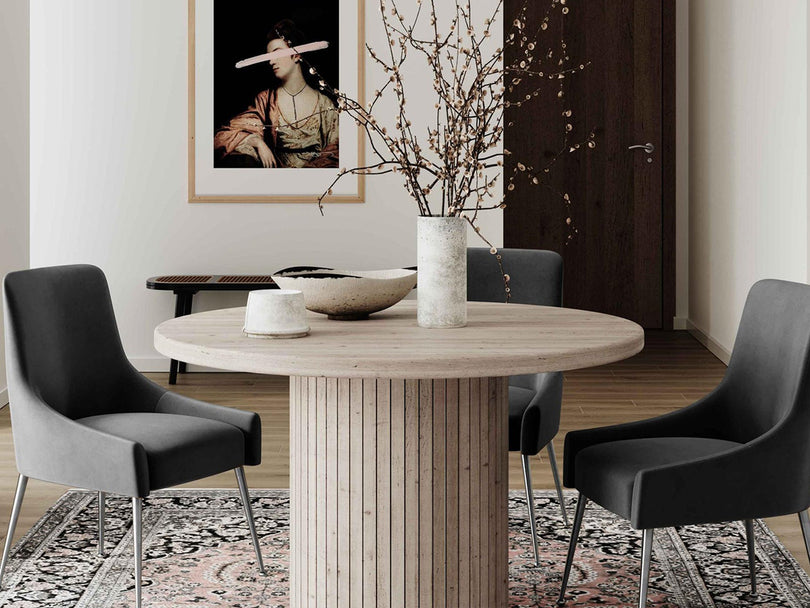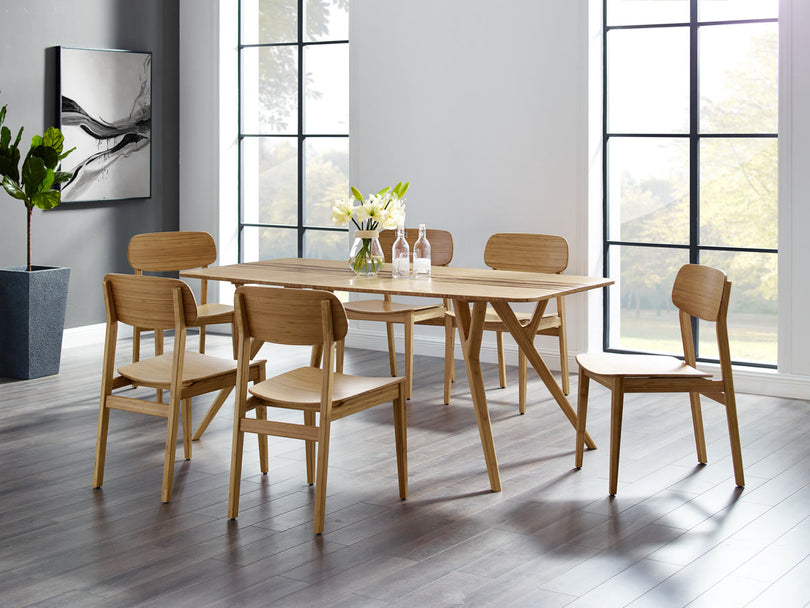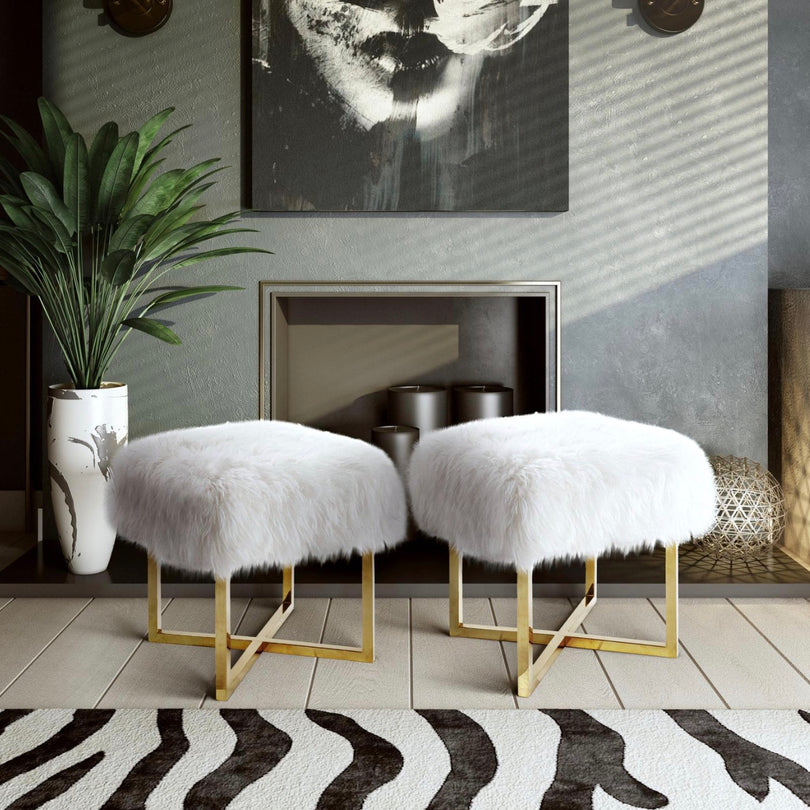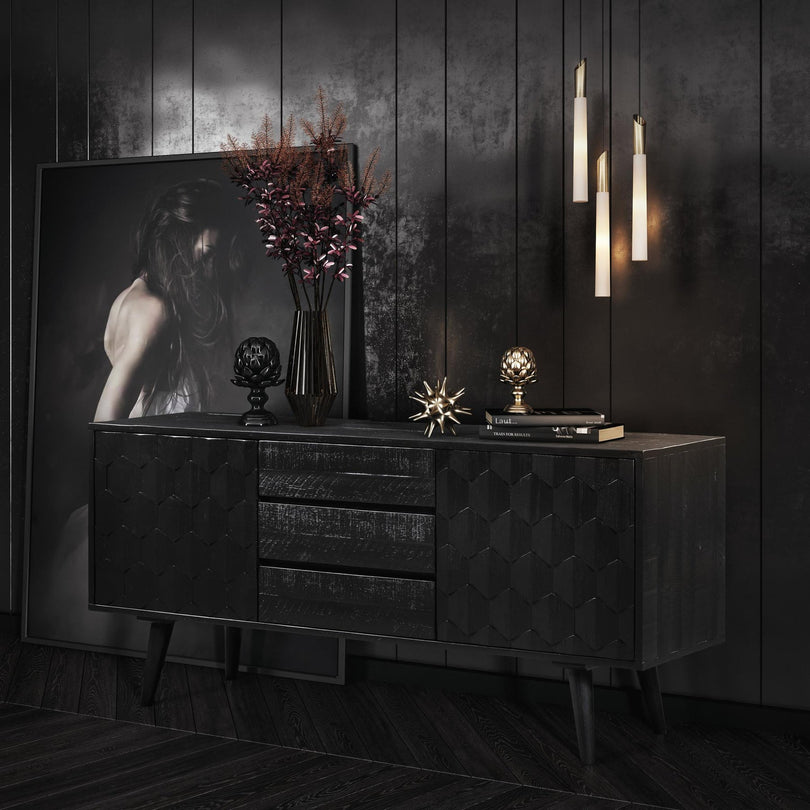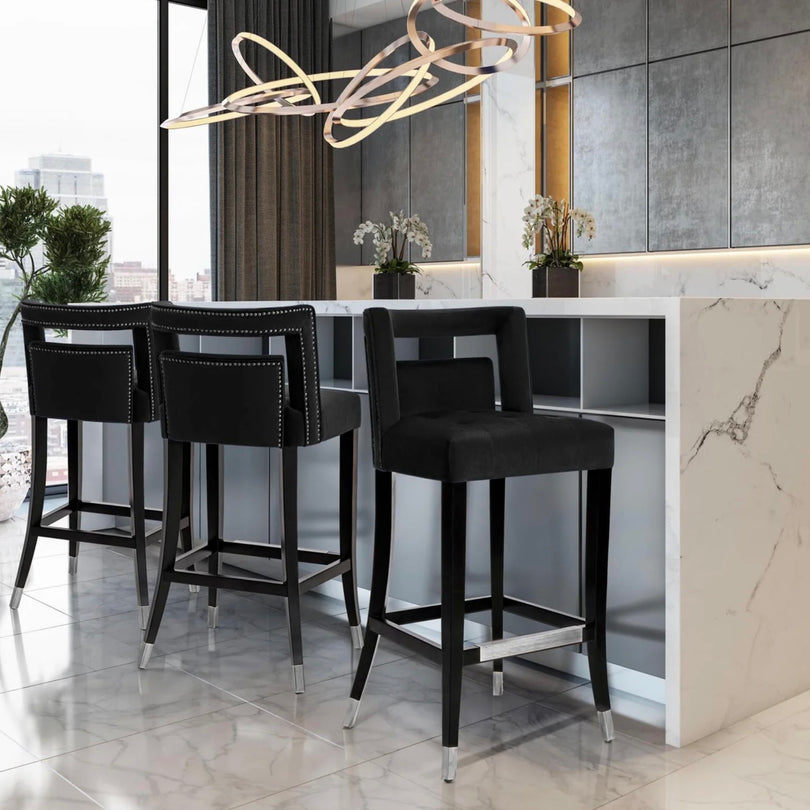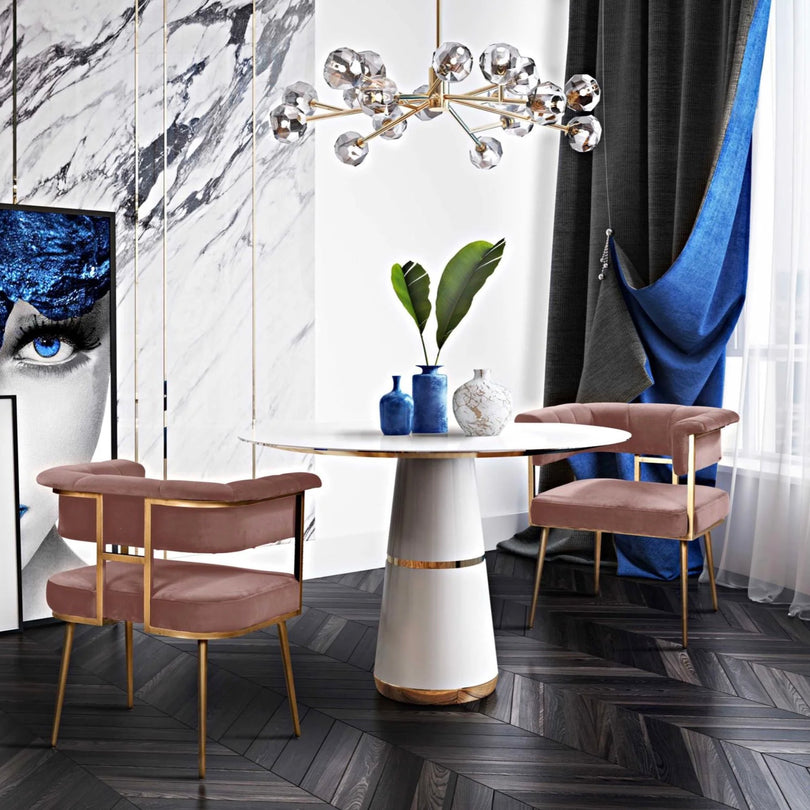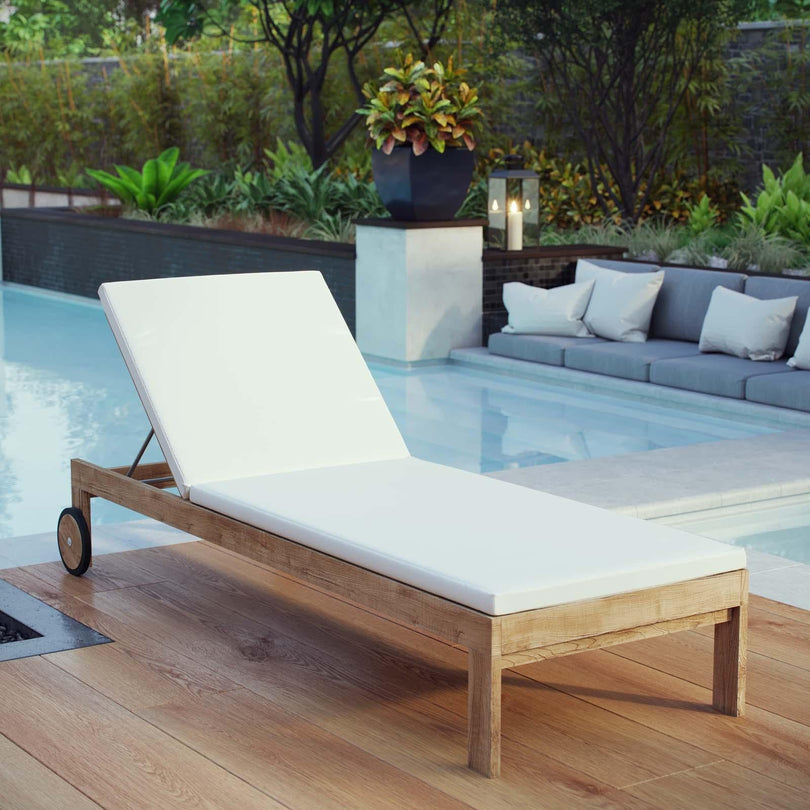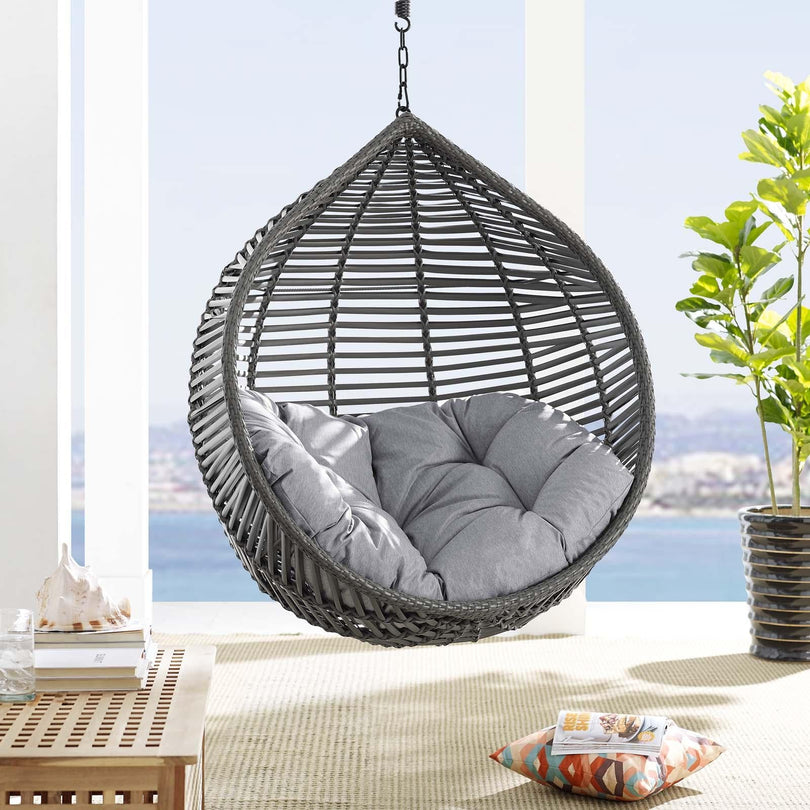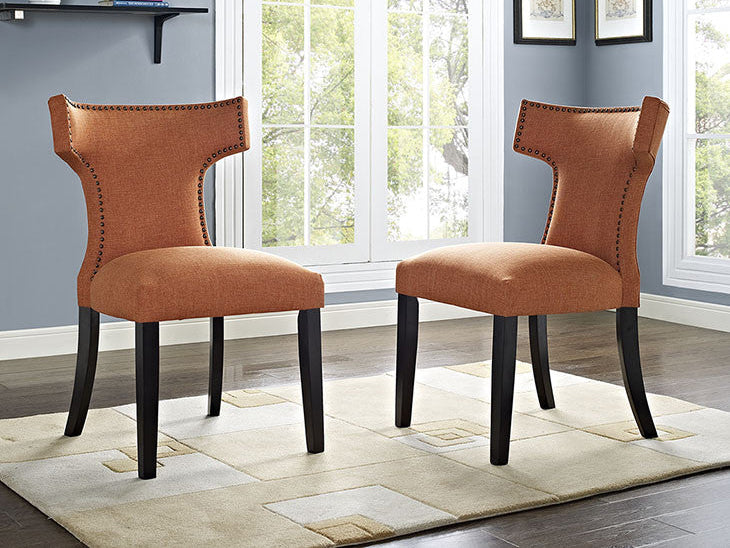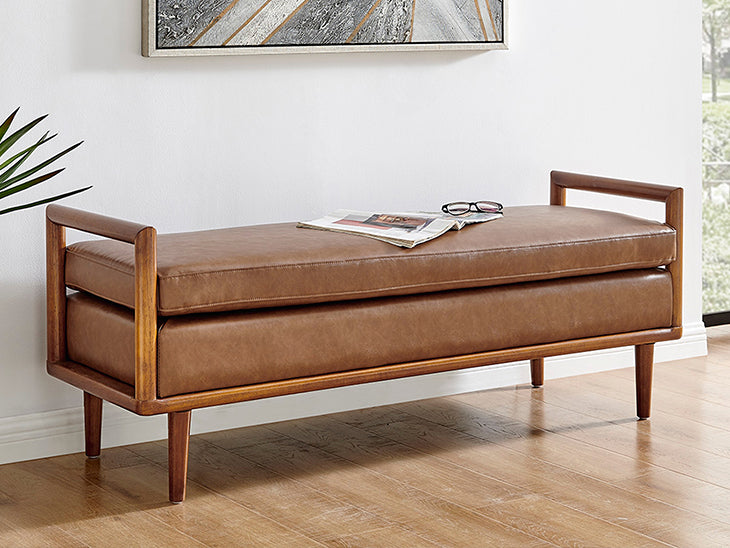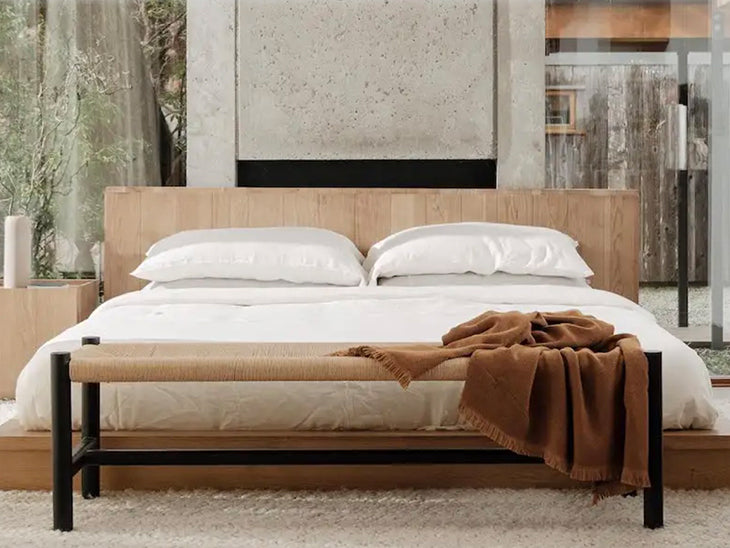Bare essentials. Refined elegance. Breath-taking simplicity. These are but a few of the alluring charms associated with minimalist furniture design. The aim? To create physical spaces that foster peace, clarity, and functionality. It's about meticulously curating a space filled with essential items, each imbued with artistic beauty - a symphony of simplicity that assures a soothing ambience. The minimalist design philosophy exercises the art of exclusion, shaping spaces that are tranquil and inspiring.
As we look upon the threshold of 2024, minimalist furniture design is expected to majestically stride in, carrying trends that further refine this pursuit of simplicity. These innovative trends are not just aesthetic choices, but are rather a harmonious blend of form, function, and mindfulness; the perfect choice for anyone yearning for tranquility amidst the chaos. So, dear reader, journey with us as we uncover the minimalist furniture trends set to transform your space in 2024, and learn how to instill this timeless elegance into your own abode.
Definition and Principles of Minimalist Design
Minimalist design is more than just an aesthetic—it's an approach to design that centers on the idea that less is more. Much like a Zen master who finds peace in the emptiness of a tranquil meditation space, proponents of minimalist design find it not in the abundance of features, but instead in the absence of distraction. This results in designs that are uncomplicated, efficient, and create a sense of calm. Now, let's dive into the fundamental principles that define this timeless design aesthetic: functionality, simplicity, and uncluttered spaces.
Functionality
The first, and perhaps the most foundational principle of minimalist design, is functionality. This principle pulls us back to the very essence of design philosophy, reminding us that design isn't just about looking good—it's about serving a purpose. In minimalist design, every element should be functional, providing value beyond mere aesthetics.
- Use only essential elements
- Emphasize functionality over form
- Avoid unnecessary details
Practically speaking, this might mean choosing a clean and simple font that's easy to read rather than a fancy but illegible one. Or, it might mean designing a website navigation that's clear and easy to use, rather than complex and confusing.
Simplicity
The next guiding principle of minimalist design is simplicity. This principle is rooted in the belief that simplicity can lead to elegance and clarity, eliminating confusion and distractions. In minimalist design, simplicity doesn't mean boring—it means distilling down to the essentials and allowing them to shine.
- Use mono or limited color schemes
- Apply flat textures and patterns
- Adopt simple, compact shapes
In the context of a living room design, for example, simplicity might be achieved by using a neutral color palette, selecting furniture with clean lines, and avoiding pattern overload.
Uncluttered Spaces
Last but not least, uncluttered spaces rank high in minimalist design principles. The absence of clutter is paramount in achieving a minimalist design that exudes calmness and control. It's all about maximizing space and minimizing chaos.
- Maximize white space in your design
- Choose minimalist furniture with streamlined designs
- Make sure every item has its place and purpose
Whether you're decluttering a crowded bookshelf or redesigning a website, creating a sense of space is key to a successful minimalist design.
Reading the culmination of these principles, it's easy to see that minimalism proposes a paradigm shift from a "more is better" mentality to realizing the value of "less is more". The beauty of minimalist design lies in its simplicity, functionality, and the effortless elegance of uncluttered spaces. This universally appealing design philosophy serves as a breath of fresh air, bringing balance, clarity, and tranquility—significantly to our fast-paced and often chaotic modern world.
The Appeal of Minimalist Furniture
Physical benefits
Minimalist furniture is respected in the design world for a myriad of physical advantages it presents to both homeowners and interior designers.
- Space efficiency - The principle of 'less is more' governs the minimalist approach. This results in furniture pieces that conserve space while still meeting our daily needs. By eliminating unnecessary elements, minimalist furniture frees up space, making your room feel more open and breathable.
- Easy maintenance - With minimalist furniture, cleaning becomes much more manageable. Without intricate details and excessive ornamental trappings, dusting and polishing are quick and easy tasks.
- Durability - Minimalist furniture often emphasizes quality over quantity. Many items are made from resilient materials like metal and solid wood, designed to last and resist wear and tear.
Psychological benefits
Besides the physical benefits, the psychological impact of minimalist furniture is just as enticing. A minimalist environment can positively affect your mood and overall well-being.
- Overview effect - Minimalism promotes a clutter-free environment, which can help reduce stress and anxiety. This overview effect, a sense of order, allows you to feel more peaceful and focused in your home.
- Aesthetic appeal - Minimalist furniture's simplistic design appeals to people who appreciate a harmonious and balanced aesthetic. With its clean lines and neutral tones, minimalist pieces often evoke a sense of calm and tranquillity. This ability to create a harmonious space makes minimalist design a wonderful choice for creating a serene, stress-free environment.
- Freedom - By opting for less furniture and more space, you're also less tied down. Minimalism teaches us to value the essentials, fostering a sense of freedom from the consumerist mentality often plaguing our modern society.
In the fast-paced world we live in, the charm of minimalist furniture lies in its simplicity and functionality. With its undeniable physical benefits and its capacity to positively impact our mental well-being, it's no surprise that minimalist designs continue to appeal to homeowners and interior designers looking for style, simplicity, and serenity.
Significant Minimalist Furniture Trends for 2024
The call for minimalist designs in home and office spaces has been growing over the years. As we inch closer to 2024, we've observed several burgeoning trends in the domain of minimalist furniture that are set to reign the aesthetics of modern interiors. These trends don't just promise eye-catching design but also focus on sustainability, functionality, and the overall enhancement of your living and working environments. Let's delve into these emerging trends that are shaping the future of minimalist furniture.
Sustainable Materials
Sustainability has become a design imperative in recent years, affecting not just architecture but also interior design. This shift towards greener solutions mirrors our collective efforts to combat pressing environmental challenges. Designers are increasingly opting for sustainable materials like bamboo, recycled metal, and reclaimed wood in crafting minimalist furniture.
- Bamboo: Known for its strength and flexibility, bamboo is an eco-friendly alternative to traditional wood.
- Recycled Metal: Incorporating recycled metal not only minimizes the environmental footprint but lends an industrial chic appeal to the furniture.
- Reclaimed Wood: Besides being an eco-conscious choice, reclaimed wood adds a sense of history and character to your minimalist furniture.
Neutral Colors
Neutral tones like beige, cream, taupe, and shades of gray and white are making a big comeback, lending a soothing and harmonious vibe to living spaces. These colors offer the perfect canvas against which minimalist furniture stands out, without being too overwhelming.
Multi-functional Furniture
In the era of compact living spaces, multi-functional furniture serves as a practical solution, especially for those residing in urban city apartments. These innovative designs, such as sofa-cum-beds or coffee tables with storage compartments, are not just space-saving but also add a futuristic edge to minimalist interiors.
Transformable Layouts
Transformable layouts refer to furniture that can be reconfigured or adapted to serve different functions or fit into different spaces. Whether it's a desk that converts into a dining table or modular shelves that can be rearranged to suit your storage needs, these transformable designs make minimalist furniture even more versatile.
Geometric Shapes
Geometric shapes, with their clean lines and defined edges, are naturally suited to minimalist furniture designs. Hexagon-shaped coffee tables, triangle bookshelves, or circular mirrors - these striking forms add visual interest and a modern touch to any space.
Natural Light Maximization
Designs that maximize the inflow of natural light contribute to an airy, spacious ambiance - a core principle of minimalism. Furniture with transparent materials like glass or acrylic, or mirrored surfaces that reflect light, can help achieve this effect.
Subtle Textures
Minimalist furniture doesn't necessarily mean a lack of texture. Subtle textures, whether it's the grain of the wood, the weave of the fabric, or the surface finish of the metal, can add a layer of visual depth and tactile allure to your minimalist decor.
In essence, the minimalist furniture trends for 2024 echo a harmonious blend of aesthetics and functionality, echoing the philosophy of "less is more." These trends foster a thoughtful and intentional approach towards design, championing conscious choices for sustainable and smart living.
How to Incorporate Minimalist Trends in Your Space
Unleashing the full potential of your living space requires more than a quick tidying spree. It's about embracing the philosophy of less-is-more and adorning your rooms with purpose and intention. Welcome to the sleek world of minimalism. Below, we break down some key steps to incorporate minimalist trends into your space with ease.
Decluttering
Before you dive headfirst into minimalist interior design, the first step you must undertake is decluttering. Remember, minimalism is all about minimal fuss and waste. It isn't a style - it’s a lifestyle.
- Begin by assessing all your belongings and decide what you do and do not need. This process is not about throwing everything away, but more about valuing your most prized possessions.
- Remember, minimalism isn't about creating a void but about appreciating simplicity.
- An efficient way to declutter is to use the decluttering method of Marie Kondo. If it doesn't "spark joy," it is not worth keeping.
- Once you have decluttered, each remaining item should have its space. This is where organization comes into play.
Choosing the Right Furniture
After decluttering, it's time to move on to the next bit: furniture. Your furniture plays a primary role in setting the minimalist tone.
- Opt for furniture that offers clean, simple lines. Avoid complicated designs, loud colors, or overly ornate furnishings.
- Remember: less is more. Choose fewer, quality pieces over an abundance of mediocre ones.
- Multi-purpose furniture is your best friend. Look for pieces that provide storage solutions as well, like an ottoman with built-in storage or a coffee table with drawers.
Arranging the Furniture
Once you have selected the right furniture pieces, the next challenge is arranging them. This is an art in itself and requires a fine eye.
- Start with the largest piece in the room and work around it. This is usually the bed in the bedroom, the sofa in the living room, or the dining table in the dining area.
- Spacing is critical. Ensure there is enough space between furniture items to allow for easy movement and a clean look.
Using Natural Light
Lastly, one of the most significant aspects of minimalism is the utilization of natural light. The natural light gives the room an open, airy, and peaceful vibe, which is the essence of minimalism.
- Ditch heavy, dark curtains in favor of sheer ones that let in more light.
- Mirrors can be strategically placed to reflect more light into the room, creating a feeling of more space.
- If possible, keep your windows clean and unobstructed to allow maximum light to flow in.
Incorporating minimalist trends in your space may seem like a daunting task at first, but as you delve deeper, you will start to see it as an opportunity to redefine your living space and, in the process, perhaps even gain a new perspective on life. It's a journey worth embarking on.
The Global Influence of Minimalist Furniture Design
Breathing simplicity, sophistication, and functionality into living spaces, minimalist furniture design has left an indelible footprint on modern home décor across the globe. Its sleek lines, polished surfaces, neutral color palettes, and elementary geometrical shapes champion unobtrusiveness and timelessness, making them the perfect choice in today's fast-paced world. This article will explore the pervasiveness and impact of minimalist furniture design in Asia, Europe, and North America.
Influence in Asia
Asia, known for its rich history of art and culture, has embraced minimalist furniture design with open arms. From Japan's Wabi-Sabi aesthetic, which reveres the beauty in imperfection, to South Korea's Hanok style that harmonizes nature and interiors, minimalist design has found its footing in various Asian subsets. A few highlights include:
- Japanese Zaisu chairs that embody simplicity and practicality
- Korean Soban tables that manifest minimalism and utility
- Chinese Ming style furniture known for modest elegance
Indeed, the idiom "less is more" rings true in Asian minimalist furniture design, where décor items, instead of overwhelming a space, serve as silent yet compelling participants in the residence's overall narrative.
Influence in Europe
From Scandinavia's functional and eco-friendly tendencies to Italy's fusion of tradition and modernity, the minimalist furniture design influence is observable throughout Europe. In Scandinavia, one can easily spot the excessive use of wood, soothing color textures, and functionality-driven designs, like the iconic Eames chair. From the Southern part of Europe, in Italy, the minimalist trend romances with luxurious materials and finishes, giving birth to designs like the Barcelona chair. Some noteworthy instances are:
- Scandinavian Marimekko prints transforming ordinary furniture into statement pieces
- Italian Venini glass creating luxurious luminosity with minimalistic design
- French Mategot style that boasts of simplicity and material honesty
Influence in North America
Shaping the North American residential landscape, minimalist furniture design serves as a subtle, less-is-more backdrop to modern living. From the famous "Case Study Houses" of the mid-20th century to the present-day tiny house movement, minimalism is evident throughout. The cardinal features commonly seen include:
- Clean lines and squared edges, as evident in Shaker furniture
- A neutral color palette, characterized by muted greys, whites, and beige
- Multi-functionality in furnishings, like sofa-cum-beds or coffee tables with storage
Minimalist furniture design's underlying philosophy of clutter-free, simple-yet-elegant living has resounded across continents, gaining admirers and advocates on a truly global scale. Its impact is invaluable, molding a design revolution where simplicity does not sacrifice style but rather enhances it. For dwelling spaces worldwide, minimalist furniture design is not just a trend—it's a lifestyle.
Closing
Embracing minimalist furniture design is more than just a passing trend; it’s a lifestyle choice that brings many benefits. As you're ready to start your minimalist journey, remember that creating an uncluttered and serene environment involves careful planning, selection, and arrangement of your furniture. It's an exciting journey that results in elegant, modern, and functional spaces.
And where else to start your minimalist transformation, if not with Minimal & Modern. As a premier destination for minimalist furniture, they offer a carefully curated collection filled with stunning pieces that reflect the best of 2024 design trends. Be it sustainable materials, neutral colors, multi-functional furniture or geometric shapes, discover all you need at Minimal & Modern. Let's redefine your space and create a peaceful, clutter-free home that you'll love and enjoy. After all, minimalism is not about having less; it's about making space for more: more peace, more clarity, and more joy.
Frequently Asked Questions
-
What are the key features of minimalist furniture?
Key features of minimalist furniture include simplicity in design, clean lines, minimal ornamentation, use of neutral colors, functional and practical designs, and decluttered appearance.
-
Which materials are commonly used in minimalist furniture?
Commonly used materials in minimalist furniture include natural wood, metal, glass, leather, and plastic. These materials are chosen for their simplicity, durability, and clean aesthetics.
-
How can minimalist furniture transform my space?
Minimalist furniture can transform your space by creating a sense of calmness, enhancing natural light, making the room feel more spacious, promoting better organization, and providing a sleek and modern look.
-
Are minimalist furniture trends expected to continue in 2024?
Yes, minimalist furniture trends are expected to continue in 2024. The minimalist approach to design has gained popularity in recent years and is likely to stay as it aligns with the contemporary desire for simplicity and functionality.
-
Where can I find affordable minimalist furniture?
Affordable minimalist furniture can be found at various places such as online marketplaces like Amazon, furniture stores offering minimalist designs, thrift stores, and even DIY projects where you can repurpose existing furniture to fit the minimalist aesthetic.

